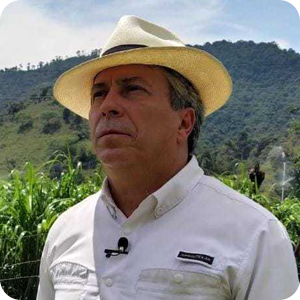Over time, farmers and science have come up with various types of agricultural approaches to meet the growing need for food and to balance its production with the impact on the environment. Specifically, the key challenge has been and remains the need to obtain maximum yields without affecting the quality of the soil and crops. One method is regenerative agriculture which aims to protect and regenerate the soil through sustainable practices. In comparison with traditional agriculture which relies on chemical fertilizers and monocultures, regenerative practices represent a more sustainable alternative. However, despite gaining increasing attention due to its benefits, there are still some challenges associated with this approach. Learn more from the article below.
Key Takeaways:
- Regenerative agriculture involves conservation measures to achieve optimal water and soil use during farming practices to prevent erosion and pollution.
- The size of the global regenerative agriculture market reached US$10.30 billion in 2023 and it is predicted this will grow to US$31.88 billion by 2031.
- Among the pros of regenerative agriculture, according to experts, are soil health improvement, the promotion of biodiversity, reduced chemical inputs, and resilience to climate change.
- The challenges of regenerative agriculture involve transition issues, knowledge and skill requirements, access to markets, and limited research and data.
DevelopmentAid: What are some of the pros and cons of regenerative agriculture?

“Regenerative agriculture minimizes intergenerational inequities in access to productive land resources. Under regenerative agriculture, a farming family keeps a variety of crops and livestock and pastures on the same farm at the same time. The retention of rain water and surface runoff on the farm is maximized through soil and water conservation structures such as terraces, infiltration ditches, ponds, water pans and water storage tanks. The use of weeds to feed rabbits, dairy goats and pigs and the application of manure from these animals onto crops and pastures ensures that soil fertility and productivity is maintained. Cattle is fed on pastureland that the farm grows and all the manure is applied to the crops and fodder grown on the farm which optimizes nutrient recycling on the farm and hence maintains soil fertility. Under regenerative agriculture each item on the farm whether living or non-living is considered to be an asset. Land productivity over time and space is maintained thereby ensuring that each generation of farmers inherits land that is just as fertile as that inherited by previous generations which leads to intergenerational equity in access to productive land resources.
Converting currently degraded soils to regenerative agriculture involves several activities including the construction of soil and water conservation structures and the introduction of different types of livestock and crop species including a variety of fodder crops. Also, limited research has been conducted into how to successfully transform degraded soils into profitable regenerative agricultural systems. There is a lack of evidence-based land management plans and business models that could assist farmers to transform their degraded agricultural land into sustainable regenerative agriculture. Converting degraded farms to regenerative agriculture production system requires a substantial amount of capital to restore the soil’s physical attributes, and the chemical and biological properties suitable for crop and livestock production.”

“Regenerative agriculture can be considered as a subset of sustainable agriculture as it emphasizes practices that not only sustain but actively regenerate the health of the land for long-term productivity and environmental well-being. The goal of regenerative agriculture is to enhance soil health, maintain and improve nutrient levels, and promote overall ecosystem health. The principles of sustainability are achieved by adopting practices that prioritize soil regeneration, biodiversity, and ecological balance. Regenerative agriculture aligns with sustainable agriculture! What are some of the pros and cons of regenerative agriculture?
Benefits:
- Soil health improvement: sustainability
- Biodiversity promotion: micro organisms
- Reduced chemical inputs: regenerative farming minimizes the use of fertilizers and pesticides to an appropriate level, normally lower than careless agriculture, reducing the environmental impact and potential harm to ecosystems.
- Carbon sequestration
- Resilience to climate change: building healthier soil and diverse ecosystems can enhance the resilience of farms to extreme weather events and other impacts of climate change.
Challenges:
- Ensuring profitability and sustainability
- Increasing farmer adoption of practices
- Market perception of added value and receive better pricing
- Obtaining certification.”

“Regenerative agriculture holds immense potential to be a cornerstone of the future of farming. Its focus on sustainability, soil health, biodiversity, and climate resilience align with global priorities. With continued research, policy support, and adoption by farmers, regenerative agriculture has the capacity to revolutionize food production for a more sustainable and resilient future. Regenerative agriculture is an approach to farming that focuses on improving soil health, enhancing biodiversity, and increasing resilience to climate change, among other goals. Here are some of the pros and cons associated with regenerative agriculture:
Pros:
- Soil health improvement: regenerative agriculture practices such as minimal tillage, cover cropping, and crop rotation help to build organic soil matter, improve soil structure, and increase soil fertility.
- Biodiversity enhancement: by incorporating diverse crop rotations, integrating livestock, and creating habitat for beneficial insects and wildlife, regenerative agriculture can promote biodiversity on farms.
- Climate change mitigation: practices such as carbon sequestration in soil, agroforestry, and rotational grazing can help to capture and store carbon dioxide from the atmosphere, thus mitigating the effects of climate change.
- Reduced input dependency: regenerative agriculture often relies less on synthetic fertilizers, pesticides, and herbicides, reducing the environmental impact and the potential health risks associated with these inputs.
- Increased resilience: by improving soil health and biodiversity, regenerative agriculture systems tend to be more resilient to extreme weather events, pests, and diseases.
Cons:
- Transition challenges: transitioning from conventional farming practices to regenerative agriculture can be challenging for farmers as it requires significant changes in management practices, infrastructure, and knowledge.
- Yield variability: in the initial stages of transition, farmers may experience fluctuations in crop yields as soil health improves and ecosystem processes become more balanced.
- Knowledge and skill requirements: regenerative agriculture requires a deep understanding of ecological principles and adaptive management techniques which may involve additional training and education for farmers.
- Market access and premiums: while there is growing consumer demand for regeneratively produced food, accessing premium markets and communicating the value of regenerative products to consumers can be challenging for farmers.
- Limited research and data: despite increasing interest in regenerative agriculture, there is still a need for more research and long-term data to fully understand its benefits, limitations, and scalability.”

“Advantages: One of the main benefits of regenerative farming is that it reduces emissions by increasing biodiversity and boosting soil quality. Regenerative agriculture promotes healthier soil through a no-till system that prevents soil erosion, promotes water retention and infiltration, increases biodiversity to boost nutrients, involves natural decomposition, and attracts insect predators for pests. Integrating regenerative agriculture principles will allow more sustainable agricultural development, contributing to climate-friendliness and resilience, and the reduction of CO2 as the farmland acts as a carbon sink. Regenerative farming methods promote conservation and healthier ecosystems by rebuilding the soil’s organic matter through holistic farming and grazing techniques.
Disadvantages: In terms of disadvantages, regenerative agriculture is time-intensive and it takes a long time to see the results. Trees do not grow overnight and soil needs time to improve. To practice regenerative agriculture effectively, many farmers will need to acquire new knowledge and skills, particularly with respect to soil management. Also, in-depth local knowledge about soil systems, ecology, meteorology, and other factors that can influence the growth of crops is necessary. Probably the biggest challenge to overcome relates to yield as a new agricultural system that does not incorporate conventional methodologies will initially provide a low yield and reduced profit margins. Another disadvantage is implementation as transitioning to regenerative agriculture is easier for small-scale farms than big industrial farms.”
See also: World Soil Day: restoring soil through regeneration of agricultural systems

“Pros of regenerative agriculture:
- Improved soil health. One of the core principles of regenerative farming is to improve soil health which is a great thing in itself, but it also has a multitude of knock-on benefits. Healthy soil has greater capability to absorb and store water. This means that less water is wasted, while run-offs and soil erosion are minimized. The healthier the soil, the more nutritious the food grown in it. Plus, nutrient-rich soil makes plants stronger against pests and diseases.
- Healthy soil even has economic benefits. By reducing the need for inputs, the profit margin increases. On top of this, healthier soil can withstand more extreme weather conditions which means the farm will be more stable and productive.
- Reduced carbon emissions. One of the benefits of regenerative agriculture is that healthy soil’s ability to capture carbon is increased. By reducing tillage, soil is left undisturbed, and therefore sees an increase in organic matter and biodiversity. This increases the amount of carbon the soil is able to draw out from the atmosphere. As a result, regenerative farmland becomes a carbon sponge, reducing the amount of CO2 gas emitted into the atmosphere through bio sequestration.
- Increased water infiltration. Water infiltration is a term that refers to the downward entry of water into the soil. The use of ‘cover crops’ in regenerative farming practices reduces the effects of erosion in soil and increases water infiltration. Reducing soil tillage also contributes to increased water infiltration. As soil is left undisturbed, surface pores in the soil remain connected and can accumulate more organic matter. Less tilling also means less soil compaction which increases soil porosity. Greater water infiltration also contributes to healthier soil and healthier plants, meaning that a farm is healthier across the board.
- Reduced reliance on chemicals. Reducing the use of chemicals, such as to improve soil health, has a host of benefits. Industrialized agriculture has become dependent on chemical fertilizers and pesticides to improve soil health and crop yields. But the use of chemicals pollutes the atmosphere with greenhouse gases which have a negative impact on our environment.
Cons of regenerative agriculture:
- It is time-consuming. Although regenerative farming can be beneficial, as it increases farm productivity, its results can’t be seen overnight. Establishing the principles and methods of regenerative farming can take years, so reaping the benefits will be a long time coming.
- It’s hard to do on a large scale. Regenerative farming is also difficult to do on a mass scale. The need for crop rotation limits how many types of produce can be grown at one time. Plus, adopting holistic grazing techniques requires greater land mass than traditional agriculture. Because of this, the mass production of crops is difficult to achieve through regenerative practices.”

“Many people think when they hear “regenerative farming” that it is a food trend that comes and goes with time. However, this farming method speaks to our present development goals, specifically the core economic units of sustainable and organic farming. It boosts soil health, promotes diversity, and diminishes the dependency on toxic substances which in turn amplifies the environmental and economic potential of mountain areas. Sustainability is no longer just a niche issue; it is a growth movement that is happening around the world. Customers now realize that the consequence of their decisions are reflected in the health of the environment and themselves. Regenerative agriculture fits the bill of a half-measure, indeed, since it tackles climate change, soil erosion and the rising need for healthy, organic food. It’s the story of an abused land where the strong survived and the weak died, where nature hurts and healing it involves humanity. It’s a story of resilience, of restoring balance, of leaving the land better than we found it. And let us face it, that is a story worth living. There is a risk that small farmers find it hard to afford the initial investment and gain the necessary skills to solve regenerative agriculture problems. In some instances, the yields may drop during the transition phase, cutting into earlier gains. Finally, there is also an upsurge in cost. Regenerative agriculture does have tremendous promise, but it is an evolving area; more research is still required to ensure that it is optimal for different regions and crops.”

“After fifty years of relevant experience in Africa, I have concluded that the decline in soil fertility cannot be reversed on the widespread basis that is needed. Mostly, African soils are more difficult to restore than in the rest of the world. Increases in population densities require that farmers switch to an intensified system of cultivation. This switch is often impeded by the increase in the age of the average African farmer, labor constraints and the absence of a secure title to the land they seek to improve. Additional factors include the lack of control of water and social values that place a high importance on leisure time. Climate change is increasing drought and flooding which exacerbates the situation. The price of key food staples and cash crops in the marketplace often do not provide the incentive to produce more. Without appropriate, affordable, and timely delivery of chemical fertilizers, crop yields in Africa will always lag well behind other regions of the world.”

“It is evident that conventional intensive ways of farming have contributed heavily to greenhouse gas emissions, biodiversity loss, and an over-dependency on fertilizers and chemicals. Due to huge leaps in technology and the rising population, the pressure to increase production has further heightened climate vulnerability and in response, regenerative agriculture is being promoted as part of the sustainable responsive solutions. To counter carbon production, leading global producers are moving towards a net-zero carbon era, promoting sustainability and purchasing the carbon equivalents reduced through regenerative agriculture which earns farmers extra income. The main advantages of regenerative agriculture are i) it restores biodiversity, ii) it reduces carbon production, and iii) it fosters low-cost productivity and soil longevity by reducing over-reliance on soil-degrading chemicals. While at an early stage and yet to adopt common standards, major players and stakeholders are collectively committed to sustainable regenerative farming in all food value chains. As best practices are being innovated, they are of huge benefit to farmers in developing countries who can barely afford chemicals. The main challenge with regenerative farming is how to scale up the engagement of farmers to adopt uniform farming practices. Plus, how long will it take global industry leaders to reach a consensus on the universal metrics for measuring carbon reduction and make this accessible to all farmers?”
See also: Illegal pesticide use in developing countries: risks and solutions | Experts’ Opinions

“Pros. Regenerative agriculture improves soil fertility, making it better for growing crops. It encourages a variety of plants and animals to thrive, which helps ecosystems. This method captures carbon in the soil which can reduce greenhouse gasses. Cons. Farmers need to learn new techniques, which can be challenging.”
DevelopmentAid: Could regenerative agriculture replace traditional conventional farming in the future? What are the arguments for this?

“Regenerative agriculture offers the opportunity to restore degraded soils which will lead to improved and sustained crops and livestock production with minimum negative environmental consequences. However, regenerative agriculture may not solve the increasing global food demands caused by population growth, rapid urbanization, and the evolution of technological innovation in global food systems. Implementing a dual food production system, one based on conventional agriculture and the other on regenerative agriculture will help the world to better adapt to climate risks, rapid urbanization, and technological evolution in global food supply chains.”

“Continued innovation in regenerative farming practices and technologies could address the challenges and improve efficiency, making it more attractive to farmers. While regenerative agriculture has benefits, its widespread adoption as the future of farming will depend on addressing the current challenges and garnering support from various stakeholders, including farmers, consumers, and policymakers. Whether regenerative agriculture could be the future depends on various factors: sustainability and environmental concerns, consumer awareness and demand, policy support and technologic innovation.”

“Regenerative agriculture holds significant promise as a sustainable and resilient approach to food production, and many experts believe it could play a crucial role in shaping the future of agriculture. Here are several reasons why regenerative agriculture could be the future:
- Environmental sustainability: regenerative agriculture focuses on improving soil health, enhancing biodiversity, and mitigating climate change, making it a more environmentally sustainable alternative to conventional farming practices.
- Climate change mitigation: by sequestering carbon in the soil and reducing greenhouse gas emissions, regenerative agriculture has the potential to contribute to global efforts to mitigate climate change.
- Resilience to climate change: regenerative agriculture practices such as crop diversification, agroforestry, and water management techniques can help farmers to adapt to the challenges posed by climate change, such as extreme weather events and changing precipitation patterns.
- Improved soil health: healthy soils are essential for sustainable agriculture, and regenerative practices such as minimal tillage, cover cropping, and crop rotation can improve soil fertility, structure, and water retention.
- Biodiversity conservation: regenerative agriculture promotes biodiversity by creating habitats for beneficial insects, birds, and other wildlife which can help to restore ecosystems and improve overall farm resilience.
- Human health benefits: by reducing the use of synthetic fertilizers, pesticides, and herbicides, regenerative agriculture can help to minimize chemical residues in food and protect human health.
- Economic viability: while there may be initial costs associated with transitioning to regenerative agriculture, in the long run, it can lead to cost savings by reducing the need for external inputs and increasing farm resilience.
- Consumer demand: there is a growing consumer demand for sustainably produced food, and regenerative agriculture aligns with many consumers’ values regarding environmental stewardship and animal welfare.
- Policy support: governments and international organizations are increasingly recognizing the importance of sustainable agriculture and providing support for regenerative practices through policy incentives, research funding, and technical assistance.
Overall, regenerative agriculture offers a holistic and integrated approach to farming that addresses environmental, social, and economic challenges. While there are obstacles to widespread adoption, such as knowledge gaps, policy barriers, and market dynamics, the momentum behind regenerative agriculture suggests that it could indeed be a significant part of the future of agriculture.”

“Sustainability is at the heart of regenerative farming and it’s about improving farm health and productivity by increasing biodiversity, enriching the soil and regenerating the land around us. The main purpose of regenerative agriculture is to provide a system that eliminates or reduces the environmental impacts of agriculture, promotes sustainable food production, enhances food security, and avoids food loss through the conservation of the environment. Reducing the risks associated with the transition period to become a regenerative farm is where governments and financial institutions can play a big role by offering subsidies, incentives, or some other kind of insurance. To enable this support, clear monitoring of results and progress will need to be deployed by using new technologies such as remote sensing to identify healthy ecosystems and soils. While yield may be a problem initially, regenerative agriculture has the potential to feed our growing population. It all depends on our mindset and willingness to commit to a systemic view of agriculture. Understanding the bigger goal of having a more significant impact on the land through increased resilience, mitigating the health impact of industrial production, and significantly reducing carbon emissions can bring a significant change in the way we perceive regenerative agriculture in the future.”

“As it currently stands, regenerative farming cannot offer the same production level as traditional, mass-scale agriculture. But it’s important to remember that there was once a time when organic farming on a large scale seemed impossible. As is the case with anything new, increased use will lead to increased viability: more farmers using regenerative practices will lead to more popularity of regenerative farming. Although regenerative farming practices may be hard to adopt in the short term, they do have clear long-term benefits. The increased capability for carbon capture has the potential to positively impact the environment. Increased soil health will grow more resilient crops and increase farm productivity year-round. And, as consumers become increasingly wary of sustainability, there will be rising demand for goods produced through regenerative methods.”
See also: What does the future of food systems look like? | Experts’ Opinions
Agriculture plays a crucial role in international development, contributing to food security, economic growth, poverty reduction, rural development, and many other aspects. If you wish to contribute to these changes, consider exploring DevelopmentAid’s website where you can find multiple job opportunities in the agricultural sector. By becoming an Individual Professional Member, you will gain access to their terms of references, as well as opportunities such as tenders, grants for individuals, and much more.

